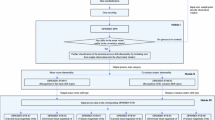Abstract
Nowadays, modern manufacturing enterprises are paying more and more attention to machining process quality control in order to ensure the product quality. Since machining quality fluctuation is performed as composite error, then error control is becoming the key point in product quality assurance. However, as a prevention method, error prediction is not used effectively. In this paper, a new method of composite error prediction based on error transfer mechanism is proposed to help control the error sources (man, machine, material, method, measurement and environment, namely 5M1E) in multistage machining processes in order to improve the product quality. Firstly, the formation process of quality fluctuation is introduced, and the quality fluctuation network is established. Secondly, after two kinds of error are defined, the single process independent error formation process and the multistage error transfer mechanism are then analyzed deeply. Thirdly, the single process independent error prediction model is established by using the LS-SVM method and error separation principle, according to which, the composite error of multistage processes is predicted based on error transfer function. Finally, an example of the real specific machining process is given to illustrate the effectiveness and correctness of this methodology.
Similar content being viewed by others
References
Zhang GB, Ran Y, Ren XL (2011) Study on product quality tracing technology in supply chain. Comput Ind Eng 60(4):863–871
Daniel Y, Fong T, Lawless JF (1998) The analysis of process variation transmission with multivariate measurement. Statistician Sinica 8:47–54
Fenner JS, Jeong MK, Jye-Chyi L (2005) Optimal automatic control of multistage production processes. IEEE Trans Semicond Manuf 18:94–103
Sun YW, Wang XM, Guo DM, Liu J (2009) Machining localization and quality evaluation of parts with sculptured surfaces using SQP method. Int J Adv Manuf Technol 42(11–12):1131–1139
Du SC, Huang DL, Lv J (2013) Recognition of concurrent control chart patterns using wavelet transform decomposition and multiclass support vector machines. Comput Ind Eng 66(4):683–695
Ceglarek D, Shi J (1996) Fixture failure diagnosis for autobody assembly using pattern recognition. ASME J Eng Ind 1:55–66
Grzesik Z (2005) Experimental errors in studying the defect mobility in nonstoichiometric metal oxide. Defect Diff Forum 237–240:139–144
Qin YT, Zhao LP, Yao YY, Xu DM (2011) Multistage machining processes variation propagation analysis based on machining processes weighted network performance. Int J Adv Manuf Technol 55(5–8):487–499
Luo ZB, Wang JS (1994) Machining error model in manufacturing process. Chin J Mech Eng 30(1):112–118
Du S, Xi L, Pan E (2008) Analysis of product quality with consideration of influence of manufacturing errors indiscrete-product machining systems. Int J Comput Appl Tech 33(1):3–11
Widodo A, Yang BS (2007) Support vector machine inmachine condition monitoring and fault diagnosis. Mech Syst Signal Process 21(6):2560–2574
Abellan-Nebot JV, Liu J, Romero Subiron F (2012) Quality prediction and compensation in multi-station machining processes using sensor-based fixtures. Robot Comput Integr Manuf 28:208–219
Fan KG, Yang JG, Jiang H, Wang W, Yao XD (2012) Error prediction and clustering compensation on shaft machining. Int J Adv Manuf Technol 58(5–8):663–670
Jiang PY, Wang Y, Wang HF, Zheng M (2013) Quality prediction of multistage machining processes based on assigned error transfer network. J Mech Eng 49(6):160–170
Han CH, Kim MJ, Yoon ES (2008) A hierarchical decision procedure for productivity innovation in large-scale petrochemical processes. Comput Chem Eng 32(4–5):1029–1041
Ferreira RJP, Almeida AT, Cavalcante CAV (2008) A multi-criteria decision model to determine inspection intervals of condition monitoring based on delay time analysis. Reliab Eng Syst Saf 24(6):905–912
Zhang GB, Liu LK, Ren XL, Ji FY, Wang GQ (2010) Key process extraction model based on FAHP and quality house in manufacturing process. ICIME 2010-2010 2nd IEEE Int Conf Inf Manag Eng 3:688–693
Author information
Authors and Affiliations
Corresponding author
Rights and permissions
About this article
Cite this article
Zhang, G., Ran, Y., Wang, Y. et al. Composite error prediction of multistage machining processes based on error transfer mechanism. Int J Adv Manuf Technol 76, 271–280 (2015). https://doi.org/10.1007/s00170-014-6253-1
Received:
Accepted:
Published:
Issue Date:
DOI: https://doi.org/10.1007/s00170-014-6253-1



